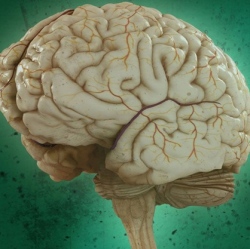
The National Institutes of Health (NIH) awarded Lawrence Livermore National Laboratory (LLNL) a grant Tuesday to develop an electrode array system that will “enable researchers to better understand how the brain works through unprecedented resolution and scale.”
The electrode array is part of an advanced electronics system to monitor and modulate neurons, using more than 1,000 tiny electrodes embedded in different areas of the brain to record and stimulate neural circuitry.
The goal is to develop a system that will allow scientists to simultaneously study how thousands of neuronal cells in various brain regions work together during complex tasks such as decision making and learning.
The biologically compatible neural system will be the first of its kind to have large-scale network recording capabilities that are designed to continuously record neural activities for months to years.
The NIH project is a collaboration between LLNL’s Neural Technology Group; the laboratory of Loren Frank at University of California, San Francisco (UCSF); Intan Technology; and SpikeGadgets.
The Neural Technology Group will work with UCSF researchers to design and build electrode arrays that can record hundreds to thousands of brain cells simultaneously. Their goal is to develop 1,000-plus channel arrays that can eventually be expanded to 10,000 channels.
These arrays will use new microchips designed at Intan that will send data to a system developed at SpikeGadgets. UCSF will coordinate these efforts and test the technologies. The arrays will penetrate multiple regions of the brain without interfering with normal functions during the experiments, allowing for detailed studies of brain circuits that underlie behavior.
The system also will be designed for compatibility with optogenetic stimulation, a technique that uses light sensitive proteins and light to manipulate neural activity. This technique allows researchers to target specific neurons or cells for recording.
